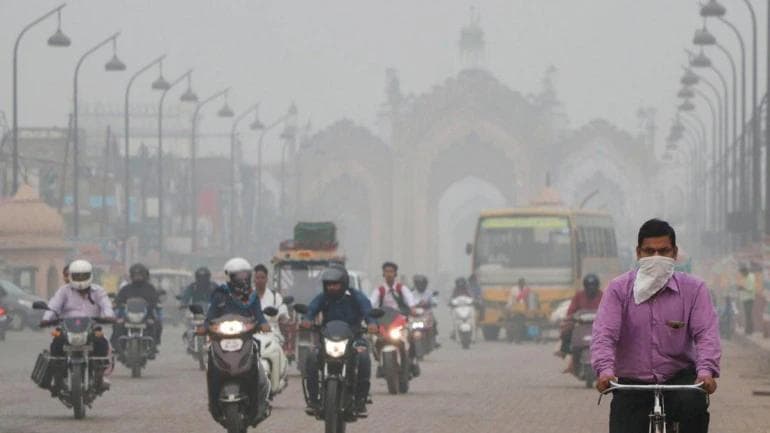As Delhi and the National Capital Region (NCR) brace for the upcoming winter, it remains to be seen if the seasonal average of PM2.5 during winter–that had improved during the pandemic but had stagnated post-pandemic–will further bend or increase. This winter season is also starting from a much cleaner benchmark due to rains in September and October.
Centre for Science and Environment’s (CSE) Urban Lab has released its winter pollution assessment –the objective, says Anumita Roychowdhury, executive director, research and advocacy, CSE, has been “to understand the trend and the starting line of the onset of the winter pollution season or pre-winter levels in this region. This would also capture the longer term context of seasonal variation and annual trends in particulate pollution.”
“The intensity of winter pollution and severity of smog episodes will depend on the effectiveness of the long term multi-sector action so far in the entire region of Delhi and NCR and also on the enforceability of the short term emergency action. Only the effectiveness of the air pollution control measures targeting all key sources will determine if the winter pollution trend that had stabilised post pandemic, will continue to hold and improve or worsen further,” says Roychowdhury.
This is an assessment of annual and seasonal trends in PM2.5 concentration for the period 1 January 2015 to 17 October 2022 (winter is defined as from October 1 to February 28). This captures seven successive winter seasons and pre-winter trends in Delhi and the National Capital Region.
This analysis covers 81 continuous ambient air quality monitoring stations (CAAQMS) spread across cities of Delhi-NCR. Meteorological data for the analysis is sourced from the Palam weather station of India Meteorological Department (IMD). Fire count data is sourced from NASA’s Fire Information for Resource Management System, specifically Moderate Resolution Imaging Spectroradiometer (MODIS) and Visible Infrared Imaging Radiometer Suite (VIIRS) product is used. Estimate of contribution of farm stubble fire smoke to Delhi’s air quality is sourced from Ministry of Earth Science’s System of Air Quality and Weather Forecasting and Research (SAFAR).
Key findings
This winter has started on the cleanest note with five “good” AQI days (for PM2.5) in the first two weeks of October. This happened due to an extended rainfall period but effects of it have started to wane as PM2.5 levels have risen above 90 µg/m3 (“poor” AQI breakpoint) on October 16. This pollution level is still low compared to previous years but it is expected to rise quickly. This rise is being driven by smoke from the farm stubble fires starting to enter the region.
As per SAFAR, this smoke contributed about 3 per cent to Delhi’s PM2.5 level on 17 October. This is happening now because burning activities have picked up in Punjab-Haryana-Delhi. The total radiative fire power of these fires in Punjab-Haryana-Delhi breeched 2,000 Watt on 16th October. This is less than half of the value recorded in 2020 and 2021 for same period, implying massive burning is in store in coming few days. Based on previous years’ observation it can be said that situation can worsen if business as usual scenario continues.
Seasonal PM2.5 average for the winter (post-pandemic) shows about 20 per cent improvement compared to the winters of 2015-18; but the progress has stagnated: Overall, long term data shows that improvement made in reducing pollution levels during the winter season has stagnated in last three years. Smog episodes are again starting to get longer and pose dire threat to public health not just in Delhi but whole of NCR. Delhi’s seasonal air quality for winter (1 Oct to 28 Feb) used hover around 180-190 µg/m3 before pandemic and for last three winters it has come down to 150-160 µg/m3. Despite the improvement the seasonal average is still over 150 per cent above the 24-hr standard and almost four times the annual standard.
Peak pollution shows similar trend as seasonal average. Peak pollution (worst 24-hr average) used to cross 800 µg/m3 at individual stations pre-pandemic, it has been hovering in 700-800 µg/m3 range during last three winters. These peak pollution numbers should be taken with caution as CPCB introduced at 1,000 µg/m3 cap on reported real-time data in 2016-17, which has greatly compromised the assessment of peak pollution level. Actual peak levels must be higher than what CPCB data shows.
It must also be noted that the worst station for peak pollution has changed seven times in last seven winters. Shadipur, DTU, CRRI Mathura Road, JLN Stadium, Alipur, ITO and Rohini have occupied the worst peak pollution title in the last seven winters. These are spread across the city with no clear pattern. This indicates that the winter pollution is regional in nature and short-term peak build-up can happen anywhere based on local meteorology and pollution sources.
Seasonal PM2.5 average for 2021-22 winter was 10-30 per cent lower compared to 2020-21 winter for most major NCR cities–but Ghaziabad and Faridabad fared worse among these cities: Winter of 2021-22 was relatively less polluted compared to winter of 2020-21 for most NCR cities. Ghaziabad registered a 30 per cent improvement that was highest among major cities, but its PM2.5 level was still about 2.5-times the 24-hr standard. Greater Noida (28 per cent), Noida (23 per cent) and Faridabad (16 per cent) also registered improvement in excess of Delhi that registered a 12 per cent improvement. Gurugram with 11 per cent improvement was the worst performer among the core NCR cities. In absolute concentration terms, Faridabad with seasonal average of 159 µg/m3 was the most polluted city of NCR last winter.
Across the larger NCR, Muzaffarnagar was worst performer as it registered a 1 per cent increase in winter level. Bulandshahr with 28 per cent improvement was the best performer among major non-core NCR cities. Baghpat with seasonal average of 142 µg/m3 was the most polluted city outside the core-NCR. Alwar with winter average of 50 µg/m3 was the only major city in NCR that registered a seasonal level lower than the 24-hr standard.
Intensity and duration of smog episodes remain worrisome: A smog episode is defined for the purpose of emergency action under Delhi’s Graded Response Action Plan when the levels of PM2.5 remain in “severe” category for three consecutive days. In this study, if two consecutive smog episodes are separated by only one day and the PM2.5 level of that day doesn’t drop below 200 µg/m3 then the whole period is considered a single extended smog episode. Last winter season, there were three distinct smog episodes counting 20 smog days (see Table in full report). This was more than the previous two winters. 2020-21 winter had 14 smog days while 2019-20 winter had 19. Most smog days were observed in 2018-19 winter when four smog episodes were recorded with total of 31 smog days. Average intensity of smog episode last winter was 306 µg/m3 which was lower than that of previous two episodes, but this marginally lower intensity is negated by the longer duration of the smog episodes.
Diwali night pollution continued to remain high in previous years: PM2.5 concentration on Diwali night (8pm to 8am) last year stood at 747 µg/m3, 22 per cent higher than that in the 2020 Diwali night. The levels on 2021 Diwali night were 4.5 times the average night-time levels recorded in the week preceding Diwali. It is noted that hourly concentrations can go beyond 1,000 µg/m3. In the 2021 Diwali, 26 of 38 operational monitoring stations hit the 1,000 µg/m3 mark.

















